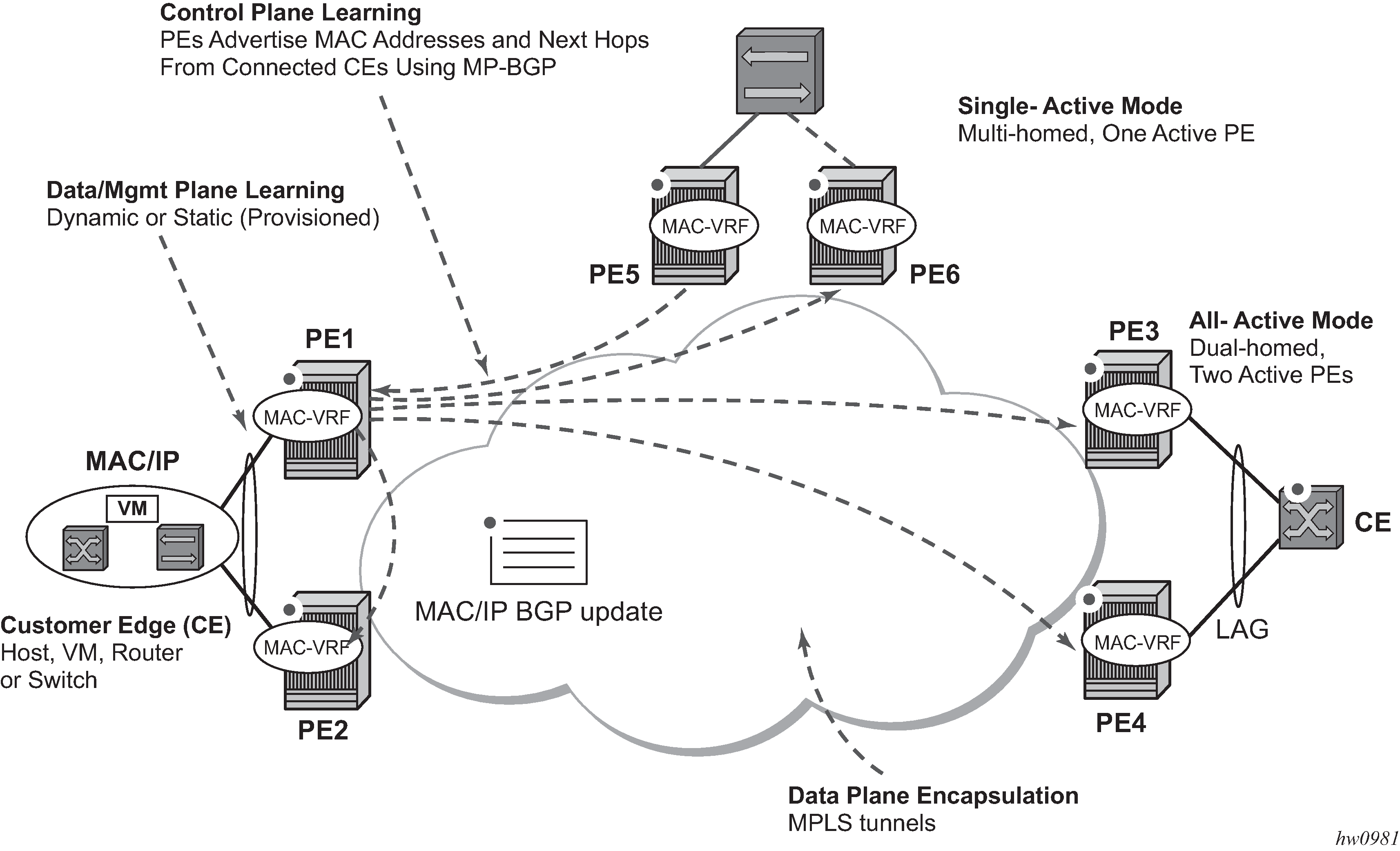The following figure shows the use of EVPN for MPLS tunnels on the 7210 SAS. In this example, EVPN is used as the control plane for E-LAN services.

Service providers that offer E-LAN services request EVPN for its multi-homing capabilities and to leverage the optimization EVPN provides.
EVPN supports all-active multi-homing (per-flow load-balancing multi-homing) and single-active multi-homing (per-service load-balancing multi-homing). Although VPLS already supports single-active multi-homing, EVPN single-active multi-homing is deemed the superior technology because of its mass-withdrawal capabilities to speed up convergence in scaled environments.
EVPN technology provides significant benefits, including:
IP-VPN-like operation and control for E-LAN services
reduction and (in some cases) suppression of the broadcast, unknown unicast, and multicast (BUM) traffic in the network
simple provisioning and management
new set of tools to control the distribution of MAC addresses and ARP entries in the network
potential to use single unified control-plane for both L2 VPN services and L3 VPN services
superior multi-homing capabilities
The SR OS EVPN-MPLS implementation is compliant with RFC 7432.